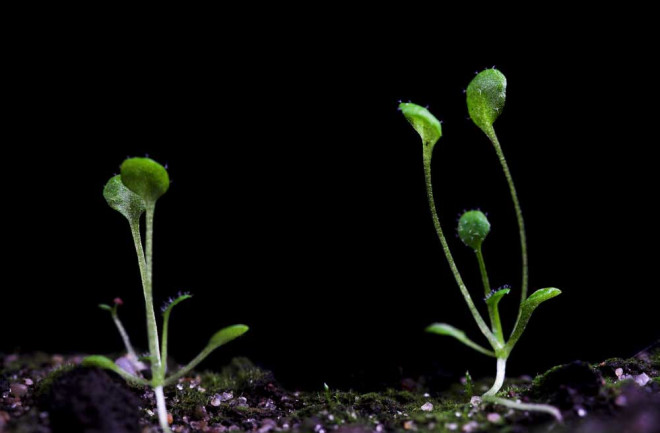
Scientists have successfully grown plants in moon soil for the first time. Thus, marking a significant milestone in lunar and space exploration. According to a team from the University of Florida, plants may successfully sprout and grow on lunar soil. It is the first step toward one-day producing plants for food and oxygen on the Moon or during space missions.
The journal Communications Biology published their research. It also looked into how plants react biologically to lunar soil, which is very different from the soil on Earth. The lunar soil was gathered during the Apollo 11, 12, and 17 missions to the Moon. It weighed 12 grams or a few teaspoons.
The researchers used thimble-sized wells in plastic plates generally used to culture cells to produce their tiny lunar garden.
A lunar milestone

Each well served as a pot. The scientists moistened the soil with a nutrient solution. They added a few seeds from the Arabidopsis plant after filling each “pot” with around a gram of lunar soil.
Arabidopsis is widely used in the plant sciences because its genetic code has been fully mapped.
Arabidopsis was also planted in JSC-1A. It is a terrestrial substance that replicates true lunar soil. It also simulated Martian soils and terrestrial soils under harsh conditions, as a point of comparison. The experiment’s control group consisted of plants grown in non-lunar soils.
The findings revealed that almost all of the seeds placed in the lunar soils sprouted.
“We were amazed. We did not predict that. That told us that the lunar soils didn’t interrupt the hormones and signals involved in plant germination,” said Anna-Lisa Paul. Paul is the research professor of horticultural sciences at the varsity.
The sprouted “plants helped establish that the soil samples brought back from the moon did not harbor pathogens or other unknown components that would harm terrestrial life, but those plants were only dusted with the lunar regolith and were never actually grown in it,” Paul added.
Variations
However, the researchers noticed variations between the plants growing in lunar soil and the control group as time went on. Plants in lunar soils, for example, were smaller and grew more slowly. They had a wider range of sizes than their terrestrial counterparts.
Paul said that these were all physical evidence that the plants were attempting to adapt to the Moon’s soil’s chemical and structural make-up. It proved when the researchers looked at the gene expression patterns of the plants.
“At the genetic level, the plants were pulling out the tools typically used to cope with stressors, such as salt and metals or oxidative stress, so we can infer that the plants perceive the lunar soil environment as stressful,” Paul said.
“Ultimately, we would like to use the gene expression data to help address how we can ameliorate the stress responses to the level where plants – particularly crops – are able to grow in lunar soil with very little impact to their health,” she noted.
